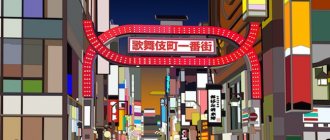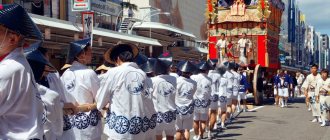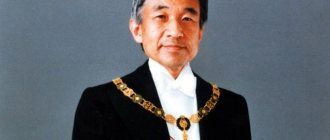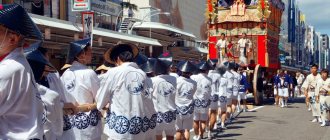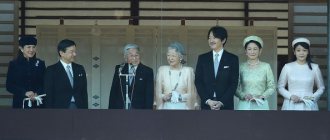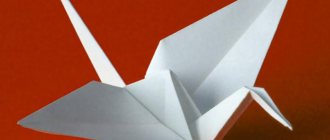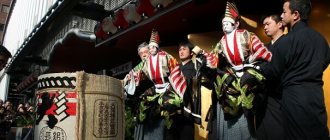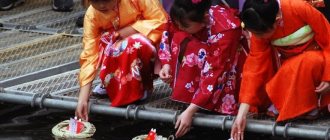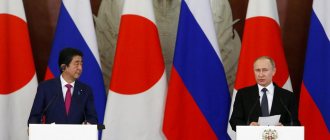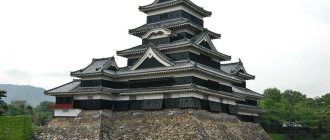Emperor Hirohito Emperor Hirohito, also known as Showa, was the 124th ruler of Japan, occupying the throne in December 1926 for the longest tenure in the history of the island nation until his death in 1989. The name Showa, which he received at the beginning of his reign, means “Enlightened World.” This is exactly how one can characterize this period in the history of Japan, a period of profound changes in the internal structure of the country.
Childhood and youth
Hirohito was born on April 29, 1901 in the capital Tokyo, the first child of the 21-year-old heir to the throne, Yoshihito, who introduced monogamy, and his 17-year-old wife, Sadako. As a child, the royal baby was raised in the family of Admiral Kawamura Sumiyoshi. In 1912, Hirohito's grandfather, Emperor Meiji, died, and his grandson began to be considered the heir to the throne.
View this post on Instagram
A post shared by Rıfat Özkan Developer (@rifatozkan)
Hirohito in his youth
Having received an education in aristocratic institutions in his youth, in 1921 Hirohito was the first of the Japanese princes to go on a six-month trip to the Old World, and upon returning to the country he was appointed regent for his father, who suffered from meningitis.
On December 25, 1926, Hirohito's father, Emperor Taisho, passed away and his son was crowned king. As the motto of the reign, the monarch chose the word “Sowa” - “enlightened world”.
↑ Stage I of government (1926-1941)
In 1926, Yoshihoto died after a long illness and on December 26, Prince Michi officially assumed the position of emperor under the name Showa. First of all, the new emperor set about improving the military infrastructure and the military complex as a whole. The harbinger of a new global conflict was in the air, and Hirohito was obliged to prepare the country for the impending storm.
It is worth noting that the emperor continued the traditions of his predecessors and extended the right granted to the Imperial Army and Navy under Meiji to block all official changes in the government. Such radical measures were also facilitated by the spread of right-wing ideology among Japanese politicians and the increasing incidence of clashes between law enforcement agencies and particularly radical elements.
The climax of the conflict was the successful attempt on the life of the head of government, Tsuyoshi, in 1932. After this incident, the emperor became a pawn in the game of the army elite, which led to Japan unleashing a war in China, as well as to further entry into the Triple Alliance with the Nazis and fascists.
Ruler of the Empire
The start of the Showa era was accompanied by an economic crisis and the growing role of the army, which had a veto in the appointment of ministers. Between 1926 and 1932, several dozen incidents of violence occurred. The Emperor himself miraculously escaped death from a grenade thrown by Lee Bong Chan, a fighter for Korean autonomy, and after the assassination of Prime Minister Inukai Tsuyoshi, all political decisions of the country passed into the hands of the military.
In 1937, the Sino-Japanese War broke out, initiated by the head of government, Fumimaro Konoe. Hirohito formally justified treating the invasion of China as an "incident" in order to avoid the limitations imposed by international conventions. At the same time, the ruler personally approved hundreds of cases of the use of chemical weapons, as well as the creation of “Detachment 731,” which carried out inhumane experiments on prisoners.
However, until the very beginning of the Second World War, the emperor did not participate in real strategic decision-making. Japan's intervention on the side of Nazi Germany was also engineered by the military. Upon learning of this, Hirohito was deeply concerned about the directive and criticized the chief of staff, insisting that peace efforts must continue until the chances of resolving the conflict disappeared.
After Konoe left office, General Hideki Tojo came to power. War could not be avoided. The new head of the cabinet reported to Hirohito that peaceful methods had been exhausted, and the monarch was forced to approve the start of military action.
On December 8, 1941, dozens of Japanese planes attacked Pearl Harbor in the United States, while Japanese troops invaded Southeast Asia. Only from that moment on did the ruler begin to delve into issues of front-line operations, trying to raise morale in the country.
The myth about the invincibility of the samurai heirs dispelled in 1944, when the cities of Japan began to be attacked by opponents. Tojo's resignation had no effect on the development of events. Only the former head of the cabinet, Konoe, fearing the communists coming to power, insisted on starting negotiations with the anti-Hitler coalition; the rest of the advisers advocated continuing the war.
Hirohito believed negotiations were inevitable, but hoped for at least one Japanese victory to gain an advantageous starting position. In April 1945, the USSR broke the non-aggression pact, and in May Germany announced its surrender. But the Japanese leadership decided to stand to the end.
The monarch listened to this plan with a straight face, secretly approving an alternative project. On June 22, the emperor made a direct appeal to the government, proposing to involve the Soviet Union as a mediator and send Konoe to a meeting with Joseph Stalin. The idea failed when members of the anti-fascist coalition demanded unconditional surrender from Asian opponents.
The atomic bombings of Hiroshima and Nagasaki on August 6 and 9, 1945, as well as the USSR's action against Japan, brought Hirohito to a standstill. On August 15, the monarch made a radio speech, according to quotes, calling on the people to “submit to the inevitable and endure the intolerable.”
Mickey Mouse's best friend The Emperor of Japan considered himself a god and started a bloody war
Lenta.ru continues the series of articles devoted to the luxurious life of dictators and their families. Last time we talked about the leader of the world proletariat, Vladimir Lenin. He promised to give land to the peasants, factories to the workers, and power to the people, however, some bourgeois habits were not alien to him. He lived either in a spacious Kremlin apartment or in a luxurious mansion in Gorki, which in the 1910s belonged to the widow of Savva Morozov. Ulyanov-Lenin's greatest passion was luxury cars from the garage of Emperor Nicholas II. This time we will talk about the Japanese Emperor Hirohito.
His reign came at a difficult time: Japan finally turned into a totalitarian militaristic power, got involved in the Second World War, lost it, survived a national catastrophe and was able to be reborn as a developed capitalist state. The Japanese considered Hirohito a god, and the allied forces considered one of the most treacherous criminals who unleashed the bloodiest world conflict in modern history. Who this monarch was - a treacherous politician who stopped at nothing, a convinced militarist or a hostage of the military machine - Lenta.ru found out.
October 1971. Japanese Emperor Hirohito arrived in Britain for a three-day visit as part of his European tour. Huge crowds of people came to see him. However, instead of joyful rejoicing, deathly silence reigned in the square. Many simply did not know how to react to the arrival of someone who during the war years was considered an enemy, and now suddenly turned into a representative of a friendly country. In the square in front of parliament, tens of thousands of onlookers watched the carriage in which Elizabeth II and the Japanese monarch were sitting.
In the evening, a reception was held in honor of the high-ranking guest at the palace, which was attended by 170 guests. The Queen decided to make a toast: “We cannot close our eyes to the past. We cannot pretend that relations between our peoples have always been peaceful and friendly. However, this experience will help us prevent this from happening in the future,” the New York Times quotes Elizabeth as saying.
Queen Elizabeth II and Emperor Hirohito enter the gates of Buckingham Palace
Photo: AP
1/5
However, despite the warm welcome of the British Queen, the limousine in which Hirohito and his wife drove through the streets of European capitals was pelted by demonstrators with apple cores and rotten vegetables. They still believed that it was precisely the panicky fear of losing power that forced the emperor to stubbornly refuse to surrender, and this delay, in turn, became one of the reasons for the bombing of Hiroshima and Nagasaki in August 1945.
The Japanese emperor, who ascended the “chrysanthemum throne” in 1929, after power was taken from him by the military, did not delve particularly into state affairs. But he had the opportunity to observe what was happening from the window of an armored car.
God's viceroy on earth preferred the German brand Mercedes-Benz. There were several reasons for this. Firstly, it was the most prestigious brand, worthy of the imperial house; secondly, Japan and Hitler's Germany began to cooperate closely in the 1930s; and thirdly, the Japanese auto industry at that time clearly did not reach the required level. Japanese companies Toyota, Datsun, Mitsubishi already existed and were producing cars at full speed, but the emperor did not like them.
Since March 1932, the Japanese government began ordering cars from Stuttgart for senior officials and the emperor. Six Mercedes-Benz cars were delivered to the country before 1935. Two years later, the Mitsui family requested the construction of another car, designed for the monarch as a special order. The car was equipped with special protection: it was made armored, with special tires and bulletproof glass. This was not done by chance: dissatisfaction with the policies of the authorities was brewing within the country, and the special services were seriously afraid of attempts on the life of the emperor.
In appearance, the car was no different from the usual limousines of this series: painted in a rich cherry color, varnished to a mirror shine. The only peculiarity is that on the sides there are golden sixteen-petalled chrysanthemums, a sign of the greatness of the emperor. The driver and bodyguard sat in front on seats upholstered in patent leather, separated from the important passenger by a partition made of bulletproof glass 2.5 centimeters thick.
The passenger part of the cabin was decorated with light Japanese-style fabric, and the floor was covered with red carpet. The car, weighing about five tons and with a power of 110 horsepower, instantly accelerated to 80 kilometers per hour. The Emperor drove this car until the very end of World War II. The car never let him down.
Mikado (that’s what the emperor was called in Japan - approx. "Lenta.ru"
) gave commands to the driver through a special device reminiscent of a ship's telegraph. The commands were displayed in hieroglyphs on the board - this is how the driver knew that the emperor wanted to go, stop, and return to the palace. The driver, like other subjects, did not even dare to raise his eyes to the son of god on earth.
The Japanese have always revered their emperor - it was believed that the current dynasty has ruled over its subjects since the time they settled the islands. The goddess of the Sun is considered the ancestor of the imperial house, so monarchs do not have clans or surnames, they only have a name and a motto that remains after death. For his reign, Hirohito chose the word Showa, meaning "Shining World."
He became interested in the wonders of technology in his early youth. The then 20-year-old Crown Prince was the first of his family members to be allowed to travel outside of Japan for six months (before that, the country tried to keep itself apart from the rest of the world) and visit European countries.
From a trip to Britain, Belgium, France, Italy and the Netherlands, he returned inspired and dreamed of implementing much of what he saw in his country. However, there was no time for that: the young man had to become a regent for his sick father.
After the death of his father in 1926, Hirohito's coronation took place, and less than a year later a terrible economic crisis broke out in the country. On the wave of decadent sentiments, the military came to power in the country, seeking to settle everything by seizing new territories.
However, the new emperor did not care much about this. Despite everything, he had great power, and he entrusted the management of the country to the council of elders and the government. Hirohito spent his free time attending military parades and donning the yellow robes of a high priest, symbolizing the Sun to his subjects.
Everything changed with the outbreak of World War II. At a special meeting on November 29, 1941, where plans were approved for the defeat of the American fleet at Pearl Harbor and the conquest of Southeast Asia, Hirohito read poems written by his grandfather, Emperor Mutsohito, to his admirals and generals. It used beautiful allegories to express fears that “high waves could destroy the silence of the sea” - a hint of the dangers of being drawn into a bloody conflict. Subsequently, this speech would be discussed more than once by contemporaries: some believed that Emperor Hirohito was trying to prevent the Japanese from starting hostilities, others that he fully supported them, only reminding them of all the risks.
Emperor Hirohito's Mercedes-Benz is now kept in the brand's signature museum
Photo: Diomedia
1/4
On August 15, 1945, the Japanese heard the voice of their emperor for the first time. By the way, all his life he suffered from a high-pitched voice, unbecoming a representative of God on earth. Hirohito proposed that the army and navy surrender. The defeat in World War II left a serious imprint on the entire nation. Everyone, from ordinary Japanese to the emperor, had to learn to live by the new rules dictated by the victors.
After the complete defeat in the war, clouds gathered over representatives of the Japanese elite. The ruling dynasty was no exception. The winning coalition dreamed of seeing the emperor in the dock along with other war criminals.
However, everything turned out differently. General MacArthur, who began to change Japan from within, unexpectedly decided that the emperor should remain, although initially it seemed that there would be no place for a monarch in the country's new political system. However, the contradictions between the allies, which later smoothly flowed into the Cold War, changed everything.
Fearing the growing influence of leftist forces and Japan's transition to the zone of Soviet influence, the American general left Hirohito, but on one condition. He must announce to his subjects that his divine origin is nothing more than a myth. This was a big blow for Hirohito and the entire royal dynasty. The sacred nature of the emperor's power has always contributed to the mobilization of the Japanese. Subjects willingly fought for the god-man monarch.
On January 1, 1946, Hirohito, using euphemisms and allegories, fulfilled MacArthur's condition. After this, the monarch’s family tried to forget about it as quickly as possible. In Japan, this declaration was never publicly mentioned again. According to the new constitution of 1947, the emperor became “a symbol of the state and the unity of the people.” However, Hirohito soon obtained permission from the occupying forces to conduct a ceremony of honoring ancestors, after which he again began to organize celebrations in honor of the goddess Amaterasu, thereby making it clear that he still considered himself a descendant of the deity.
Accustomed to living in luxury, he did not change his habits. In addition to the surviving Mercedes-Benz cars, after the war he acquired three more Rolls-Royces and one Daimler. In 1966, a Japanese-made car, the Prince Royal Limousine, finally appeared in the emperor's garage. There were rumors that the emperor loved Disney cartoons and in the 70s he realized his dream - he visited American Disneyland.
On February 24, 1989, schools, shops, businesses and other institutions were closed in Tokyo. The city, plunged into mourning on January 7, the day Emperor Hirohito died, saw off the monarch on his last journey. The funeral ceremony, which cost the country's budget $80 million, was attended by over 700 representatives from 163 countries and 28 international organizations.
The $24 million funeral cortege passed Parliament and the Olympic Stadium. To the accompaniment of flutes, trumpets and drums, a black lacquered imperial palanquin weighing 1.5 tons was carried, inside of which lay a three-layer coffin. Tens of thousands of Japanese took to the streets to see off their monarch, who had ruled the country for 62 years. At the same time, as before, when the car with the beloved emperor slowly rolled through the streets of the Japanese capital, and his subjects lined up along the road, they did not dare to look at the monarch from the platform located above the first floor. The emperor simply cannot be looked down upon.
Under him, Japan experienced the glory of the largest colonial power, the humiliation of capitulation and the transformation into one of the leaders of the world economy. The image of the emperor himself underwent no less amazing metamorphoses. At first he was considered a god, then a war criminal, and finally he became “a symbol of the state and the unity of the people.”
Constitutional monarch
After the war, US President Harry Truman tried to bring the emperor to trial as a war criminal. The emperor's relatives played along with the Americans, demanding that the ruler abdicate.
However, the head of the US-appointed administration, Douglas MacArthur, supported the view that Hirohito was innocent. The general viewed the ruler as a symbol for the Japanese people and a guarantee of stability for the occupation authorities.
Posted by Khang Lac on Monday, December 21, 2020
Hirohito and Douglas MacArthur
With the entry into force of the country's new fundamental law in 1946, the title of the ruler changed to "constitutional monarch". The emperor was forced to part with his “divine origin from the sun goddess Amaterasu” and declare himself an ordinary mortal.
Hirohito became a Western-style monarch. The emperor devoted the second part of his biography to fulfilling the duties of a “symbol of the nation.” These include holding banquets, presentations, receiving foreign guests and representing Japan abroad. Hirohito became the first head of Japan to meet with US President Gerald Ford, and made every effort to democratize Japan and improve the country's image.
The Emperor was awarded dozens of foreign awards, among them the Russian Orders of Apostle Andrew the First-Called and Alexander Nevsky. The film “The Sun” by Alexander Sokurov tells about Hirohito. The reign of the monarch is dedicated to the book “Hirohito and the Creation of Modern Japan” by Herbert Bix, which won the Pulitzer Prize.
In his personal life, the emperor was well versed in marine biology and back in the 1920s he opened a laboratory in the palace, where he conducted research with his own hands. Over the years of his reign, Hirohito published several scientific publications, revealing to the world dozens of new invertebrates of the hydroid class.
Stamp and signature
Hirohito became emperor when Japan was ruled by the military. The formation of the cabinet of ministers took place under the control of the army and navy, and if the military did not agree with any candidate, it was rejected. Moreover, according to the constitution (Japan was the first Asian country to adopt a constitution back in the 19th century), any important state document had to be signed not only by the emperor, but also by the prime minister. That is, the emperor did not have absolute power. Although the prime minister also could not give life to any decision without the seal and signature of the emperor. Japan was permeated with a militaristic spirit, and Hirohito, who knew about such an attitude, could hardly resist it. However, oddly enough, Japan in the 1930s did not even have a specific enemy. It was only towards the end of the 1930s that Japan realized that as a great empire it needed colonies, and colonies could most easily be captured in Southeast Asia. However, even earlier, in 1931-1932, Japan probed its eastern neighbors - China and the USSR. To do this, she captured Manchuria and formed the puppet state of Manchukuo there. With the participation of his armed forces, the Japanese poked a Russian bear in the side twice - in 1938 at Lake Khasan and in 1939 at Khalkhin Gol. And both times we received such an answer that we decided that it was better not to mess with the USSR! From that moment on, despite Japan’s formal participation in the Anti-Comintern Pact and the Triple Alliance, Japan no longer entered into conflicts with the USSR. She found herself another enemy - the United States.
Personal life
On January 26, 1924, Hirohito married Princess Nagako - Empress Kojun (March 6, 1903 - June 16, 2000). Hirohito chose his bride by peeping through a hole in the wall at a tea ceremony in which high society girls participated. This marriage produced 7 children.
Embed from Getty Images Emperor Hirohito with his wife
The eldest daughter, Princess Teru, was born before Hirohito ascended the imperial throne. She was followed by Hisa, who died in infancy, and princesses Taka and Yori, the eldest of Hirohito's living children. The first male child was Crown Prince Tsugu, the future Emperor Akihito, born on December 23, 1933. After him, Prince Yoshi (Masahito), who has been third in the line of succession since 2019, and Princess Suga were born.
Early years[edit]
He was born at Aoyama Palace in Tokyo to Crown Prince Yoshihito (later Emperor) and Princess Sadako. His childhood title is Prince Michi (Michi no miya). He became the heir to the throne after the death of his grandfather, Emperor Meiji on July 30, 1912. He formally received the title of crown prince on November 2, 1916.
He received an excellent education at a school for children of the highest aristocracy (kazoku), where he studied from 1908 to 1914, and then at the special Crown Prince Institute (Togu-gogakumonsho) from 1914 to 1921. under the leadership of the best scientists of Tokyo Imperial University and the highest military officials of Japan. In 1921, Crown Prince Hirohito made a six-month trip to Europe, visiting England and 5 other European countries. On November 29, 1921, he became regent of Japan in place of his ill father.
On January 26, 1924, he married his distant relative Princess Nagako, daughter of Prince Kuni Kiniyoshi. From this marriage 7 children were born:
- Princess Teru ( Teru no miya Shigeko
), b. December 9, 1925, d. July 23, 1961; since October 10, 1943, married to Prince Morihito (May 6, 1916 - February 1, 1969), eldest son of Prince Higashikuni Naruhiko and Princess Toshiko, 8th daughter of Emperor Meiji; lost status as members of the imperial family on October 14, 1947. - Princess Hisa ( Hisa no miya Shigeko
), September 10, 1927 – March 8, 1928. - Princess Taka ( Taka no miya Kazuko
), September 30, 1929 - May 26, 1989; since May 5, 1950, married to Takatsukasa Toshimichi (August 26, 1923 - January 27, 1966), eldest son of Takatsukasa Nubusuke, peer. - Princess Yori ( Yori no miya Atsuko
), b. March 7, 1931; since October 10, 1952 she has been married to Ikeda Takamasa (born October 21, 1927), the eldest son of the former Marquis Ikeda Nobumasa. - Crown Prince Akihito (now Emperor of Japan), b. December 23, 1933; Since April 10, 1959, he has been married to Shoda Michiko (born October 20, 1934), the eldest daughter of businessman Shoda Hidesaburo, former president and chairman of a large flour-grinding company.
- Prince Hitachi ( Hitachi no miya Masahito
), b. November 28, 1935; since October 30, 1964 he has been married to Tsugaru Hanako (born July 19, 1940), the fourth daughter of the former Count Tsugaru Yoshitaka. - Princess Suga ( Suga no miya Takako
), b. March 2, 1939; Since March 3, 1960 she has been married to Shimazu Hisanaga, the son of the former Count Shimazu Hisanori.
Death
In the fall of 1987, Hirohito underwent surgery, during which duodenal cancer was discovered, which became the cause of death a year later. On January 7, 1989, at the age of 87, Hirohito died.
Embed from Getty Images Color photo of Hirohito as an old man
On January 24, a funeral took place, which was held in a secular manner, without a Shinto service. Hirohito's ashes are placed in a mausoleum at Hachioji Temple in the Japanese capital, next to the predecessor emperors.
The deceased ruler had 5 children, 10 grandchildren and 1 great-grandson. Hirohito's eldest son Akihito became the new monarch.
Divinity[edit]
Claims of the divinity of the Emperor of Japan during World War II are well known. Under the Japanese Constitution of 1889, the emperor has divine authority over his country, which is derived from Japanese myths about the origin of the imperial family from the sun goddess Amaterasu.
In 1946, under pressure from the American occupation authorities, the emperor issued the Ningen-sengen rescript, which was perceived by many as his renunciation of divine nature and origin. The exact meaning of the corresponding phrase, however, is difficult to understand and can be interpreted ambiguously.
